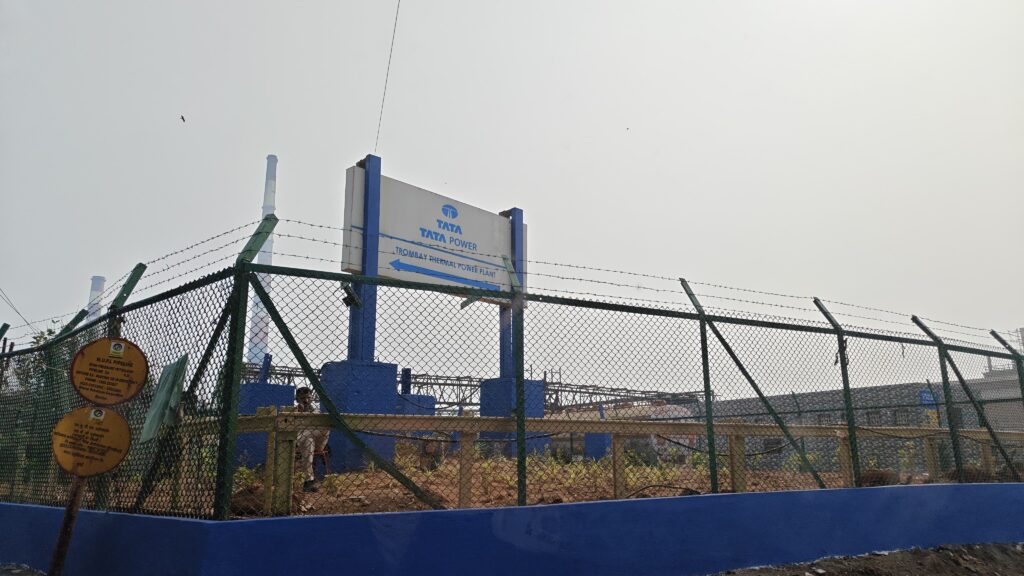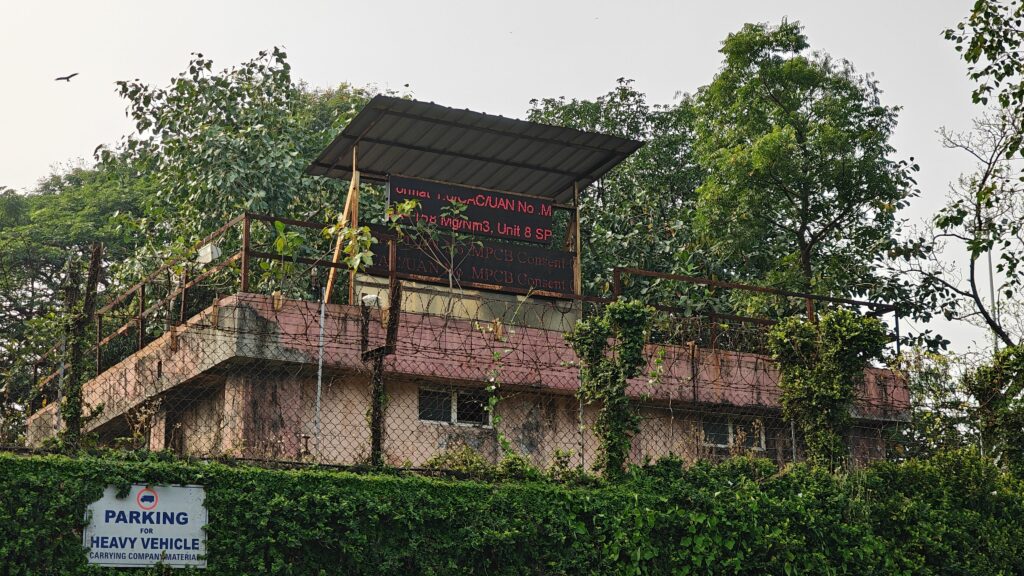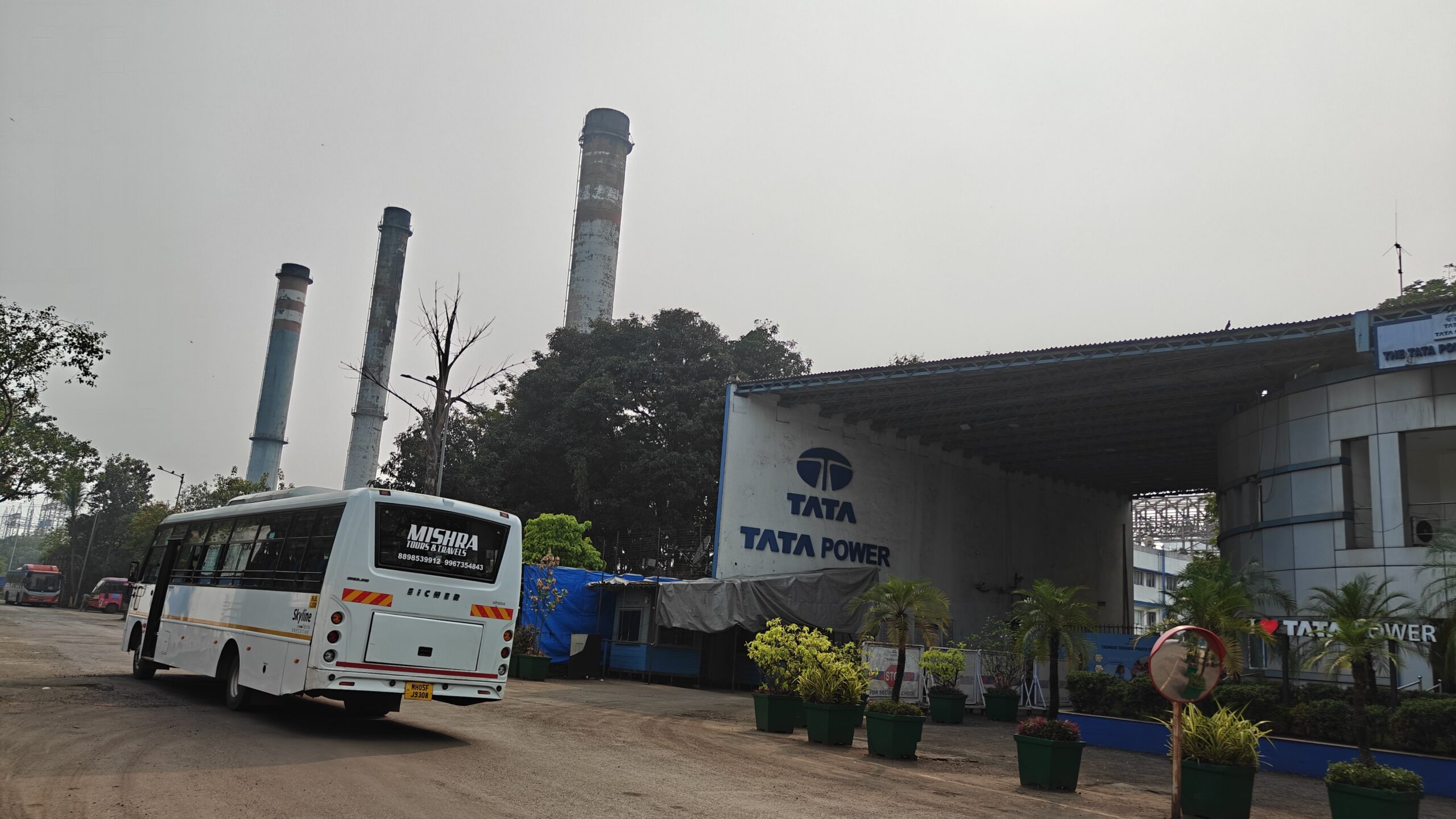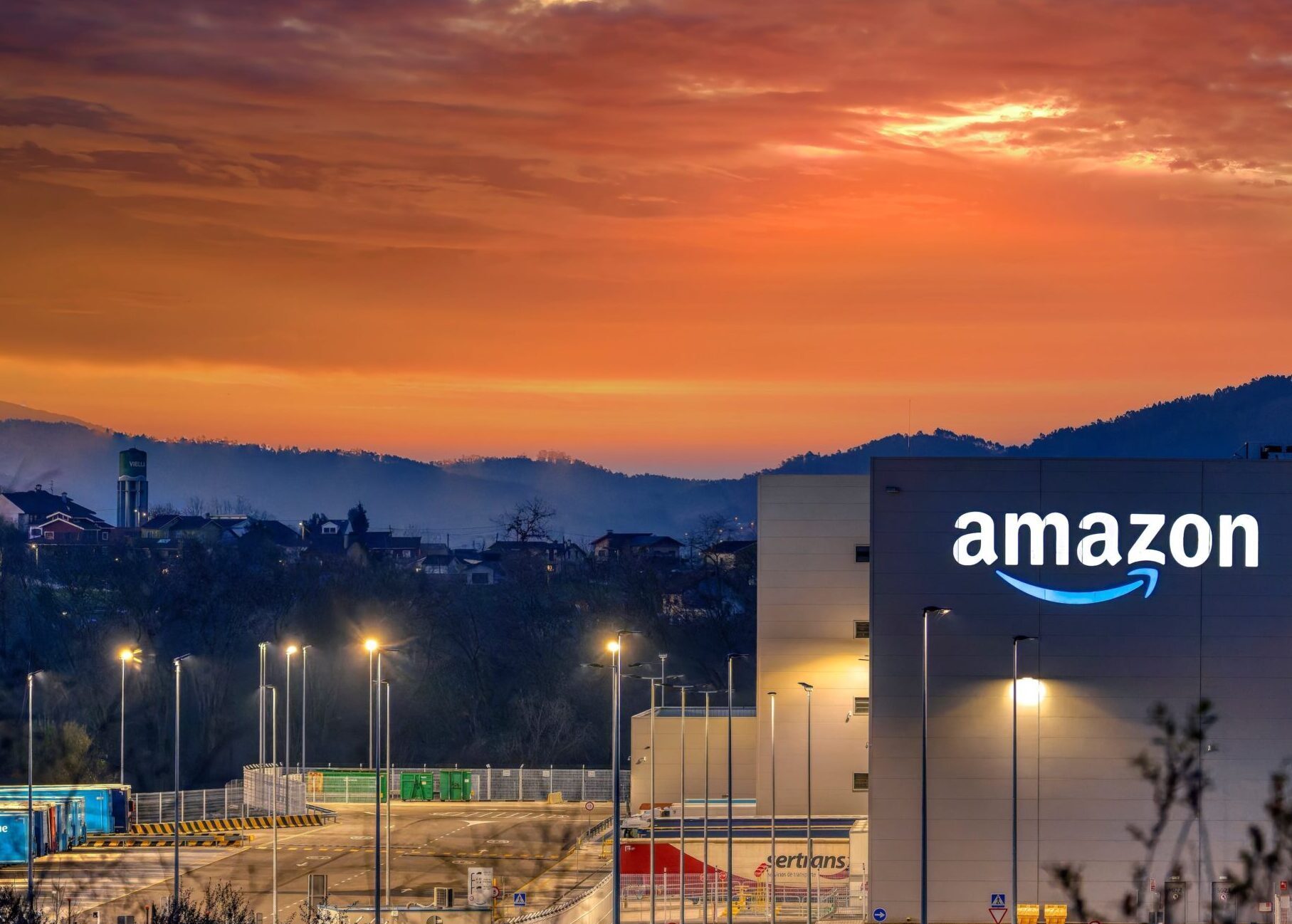Soaring electricity demand in Mumbai, where Amazon has 16 data centres, has led to ageing coal power stations being kept open—and worries that AI is helping keep the world hooked on fossil fuels
By SourceMaterial and Sushmita
Each day Kiran Kasbe drives a rickshaw taxi through his home neighbourhood of Mahul on Mumbai’s eastern seafront, down streets lined with stalls selling tomatoes, bottle gourds and aubergines—and, frequently, through thick smog.
Earlier this year, doctors found three tumours in his 54-year-old mother’s brain. It’s not clear exactly what caused her cancer. But her illness was made more likely by the coal plant a few hundred metres down the road.
Mahul’s air is famously dirty. Even behind closed car windows there is a heavy stench of oil and smoke.
“We are not the only ones facing health challenges in the area,” said Kasbe, 36. “It’s all covered with filth.”
A coal plant in the district run by the Indian multinational Tata Group, and another to the north of Mumbai run by its rival, Adani Group, were due to close last year in a government push to cut emissions. But late in 2023 that decision was reversed after Tata argued that electricity demand was rising too fast for the city to go without coal.

Economic growth and the need for air conditioning as climate change raises temperatures have seen India’s electricity demand soar in recent years. But a SourceMaterial investigation reveals the biggest single factor in the city’s failure to end its dependence on fossil fuels: energy-hungry data centres.
It also reveals that the world’s biggest data centre operator, Amazon, has a far larger presence in Mumbai than it has acknowledged.
In the city’s metropolitan area, Amazon, on its website, records three ‘availability zones’, which it defines as one or more data centres. Leaked records from last year seen by SourceMaterial from inside Amazon reveal there are 16 data centres in the city.
As India transforms its economy into a hub for artificial intelligence, the data centre boom is throwing doubt on government commitments to wean the country off coal, said Bhaskar Chakravorti, who researches technology’s impact on society at Tufts University.
“I’m not surprised they’re falling behind their green transition commitments, especially with the demand growing exponentially,” he said.
Kylee Yonas, a spokeswoman for Amazon, said Mumbai’s “emission challenges” were not caused by Amazon.
“Amazon is one of the largest corporate investors in renewable energy in India, and we’ve supported 53 solar and wind projects in the country capable of generating over 4 million megawatt hours of clean energy annually,” she said. “These investments, which include our 99 megawatt wind project in Maharashtra, are enough to power over 1.3 million Indian homes annually once operational.”
AI boom
Amazon is building hundreds of data centres around the world as it vies with Microsoft and Google for leadership of the booming AI market. The Seattle-based company has never said publicly how many data centres it uses.
Industry estimates put the number between 100 and 475. But leaked figures seen by SourceMaterial show that last year Amazon used 924 data centres, with many more in development.
The company is failing to take responsibility for its role in prolonging the use of the most polluting energy sources, said Eliza Pan, a spokeswoman for Amazon Employees for Climate Justice.
“Amazon is using the shiny thing of AI to distract from the fact that it’s building a dirty energy empire,” she said.
Yonas, the Amazon spokeswoman, said: “Not only are we the leading data centre operator in efficiency, we’re the world’s largest corporate purchaser of renewable energy for five consecutive years with over 600 projects globally.”
Amazon has been criticised for using controversial renewable energy certificates alongside direct purchases of green energy.
Hidden data centres
Amazon, an online marketplace that processes 13 million customer purchases each day, has bet billions of dollars on an expansion into cloud computing and AI-assisted services, from automated coding to translation.
The reason that the number of Amazon data centres has been underestimated is likely to be the company’s use of servers that it leases rather than owns, according to a letter sent by a former Amazon employee to the US Federal Trade Commission last year and seen by SourceMaterial.
In the letter, the employee raised concerns that these undisclosed data centres could potentially conceal an Amazon monopoly over the cloud computing market. (The Trade Commission did not open an anti-monopoly investigation.)
Data centres currently account for 1.5 per cent of global demand—but as the global AI boom drives construction, that could rise to 4.4 per cent by 2035, nearly twice as much as aviation’s share today, according to the International Energy Agency.
Amazon has concentrated the centres it owns outright in Virginia and Ohio, where gas and coal provide a large share of electricity. Outside the US, Amazon usually rents either entire facilities or server racks in centres shared with other companies.
“Amazon is using the shiny thing of AI to distract from the fact that it’s building a dirty energy empire”
It is the shared “colocation” units that account for the largest increase in data centre energy use globally, said Shaolei Ren, a computing specialist at the University of California, Riverside.
“Most of the energy in the data centre industry is going into colocations,” he said. “They are everywhere.”
In 2023, Amazon’s colocation data centres used over 7.8 million megawatt hours of electricity, according to the data, more than enough to power every home in Seattle and San Francisco combined. These centres account for about a fifth of Amazon’s total processing power, the figures show.
Colocation facilities are often smaller, and more likely to be built in urban areas rather than remote locations favoured for hyperscale data centres like Amazon’s sprawling Project Rainier complex in rural Indiana, Ren said.
They tend to be less energy efficient, he said, and, like Amazon’s facilities in Mumbai, often go unnoticed.

Amazon’s Mumbai data centres used 624,518 megawatt hours of electricity in 2023, enough to power over 400,000 Indian households, the leaked data shows.
India is poised to overtake Japan and Australia to become the second-largest user of data centre electricity in the Asia-Pacific region, S&P has forecast. By 2030 data centres will consume a third of Mumbai’s energy, according to Ankit Saraiya, chief executive of Techno & Electric Engineering, an Indian power infrastructure supplier.
‘Toxic hell’
As it scrambles to keep ahead of demand for power, the government has extended the life of Tata’s coal plant by at least five years.
When Tata argued for the extension, the biggest single factor the company cited was increased energy demand from data centres. Tata’s rival Adani, whose nearby coal plant was also reprieved, said “most” anticipated new demand would be from data centres.
Tata’s power station is not the only polluter in Mumbai’s Mahul district. The area is also home to three refineries and 16 chemical factories, according to a 2019 think tank report which called the neighbourhood a “toxic hell”.
But the Tata station is “one of the key sources of air pollution in Mumbai”, according to Raj Lal, chief air quality scientist at the World Emission Network.
Opened in 1984, it is one of India’s older power stations and subject to laxer emissions restrictions, contributing nearly a third of local PM2.5 pollution, said Manoj Kumar, an analyst at the Centre for Research on Energy and Clean Air. PM2.5 refers to airborne particles 2.5 micrometers or less in diameter that can cause significant health problems when inhaled.
Toxic heavy metals in coal ash from the plant are likely to cause “respiratory diseases, kidney issues, skin problems, cardiac issues”, said Shripad Dharmadhikary, founder of the environmental organisation Manthan Adhyayan Kendra.
It’s “obviously not good for the environment,” said Debi Goenka of Conservation Action Trust, a Mumbai-based campaign group. “No matter what safeguards you put into place, there’s always going to be pollution.”

Even with the Tata plant kept running, Mumbai’s power grid is creaking under the strain of surging demand. To guard against blackouts, Amazon’s colocation data centres in Mumbai have bought 41 diesel generators as backup and are asking for approval to install more, documents show.
In August a report by the Center for Study of Science, Technology and Policy (CSTEP) identified diesel generators as a major source of air pollution in the region.
The presence of data centres that require constant power and diesel generators for backup “will naturally exacerbate emissions”, said Swagata Dey, air quality specialist at CSTEP. Data centre operators should be required by law to power them with pollution-free solar electricity, she said.
“Public health impacts must be a central consideration when siting data centers and choosing energy sources,” said Ren of the University of California, Riverside, who co-wrote a recent paper assessing public health risk from diesel generators at US data centres.
‘Everything is contaminated’
Mahul, where Kasbe drives his rickshaw, is a former fishing village now home to tens of thousands of people who moved there after slum clearances elsewhere in the city.
Kasbe and his mother arrived there in 2018 after their home in the suburb of Vidyavihar was demolished. She had been healthy before the move but deteriorated rapidly until eventually she was diagnosed with brain cancer, he said.

Gajanan Tandle, who lives nearby, said pollution-linked illnesses were common. “There are so many cases of skin and eye irritation, cancer, asthma, TB and more, and no assistance from the government,” he said.
Another local, Santosh Jadhav, has lobbied the government to move people away from Mahul.
“Everything is contaminated. We are tired of fighting for a decent means of living,” he said. “It’s hell for us here.”
This story was produced with support from Internews’s Earth Journalism Network.
Headline picture: Sushmita





